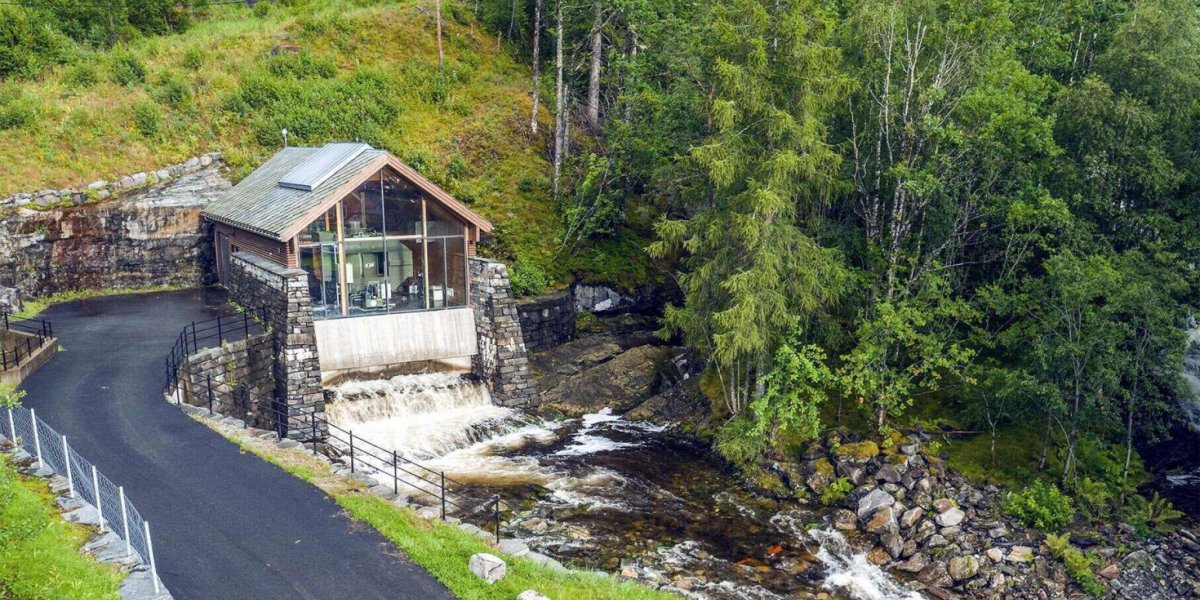AN EXAMPLE OF A SMALL-SCALE HYDROPOWER PLANT: THE ALSAKER POWER PLANT IN KVINNHERAD MUNICIPALITY IN WESTERN NORWAY. PHOTO BY SMÅKRAFT AS.
New study shows lack of government support for renewable energy communities
Although EU law gives all citizens in Europe the right to participate in a renewable energy community, there is a lack of national support schemes for the development of such communities, a new study shows.
Regulations are also often complicated and there is a lack of clearly defined policy targets, which could hamper the development of renewable energy communities, says the study, which has been conducted as part of the EU-funded COME RES project.
The study was published in April 2021 as Deliverable 2.1 of the EU-funded COME RES project, and features an in-depth analysis of the technical, legal, policy, economic and social conditions for renewable energy communities in nine European countries – Belgium (only the Flemish part), Germany, Italy, Latvia, the Netherlands, Norway, Poland, Portugal and Spain.
All these nine countries must do more to adapt their national legislation to the requirements of the recast EU Renewable Energy Directive (RED II) that apply to renewable energy communities, the study concludes.
For instance, none of the nine countries included in the study have developed an enabling framework to promote and facilitate the development of renewable energy communities that satisfy the minimum requirements listed in the recast directive.
Challenging to establish new renewable energy communities
The lead authors of the study are Karina Standal and Stine Aakre, who are a senior researchers at CICERO Center for International Climate Research.
“The establishment of more renewable energy communities can be an important means towards Europe’s goal of increasing both the share of renewable energy in the electricity supply, and flexibility in the electricity systems,” says Standal.
“Our study clearly indicates that it is currently quite challenging to establish new renewable energy communities in many European countries, and that national governments need to do more to promote the development of this ownership model for clean energy,” she says.
Our study clearly indicates that it is currently quite challenging to establish new renewable energy communities in many European countries, and that national governments need to do more to promote the development of this ownership model for clean energy.
It is particularly challenging to establish renewable energy communities involving onshore wind turbines, as these are subjected to more regulations than solar energy in all the nine countries this study has looked at. In addition, there is widespread public opposition to onshore wind in many of the countries included in the study.
“Previous research has showed that public opposition to the development of new wind energy projects often decreases if the turbines are locally owned. The development of renewable energy communities could therefore help increase community acceptance for renewable energy,” Standal says.
New policies and targets are needed
Although there has been some progress, the regulatory framework, and the support schemes for renewable energy in the countries included in this analysis, have not necessarily been designed with renewable energy communities in mind, according to Aakre.
“To ensure that more renewable energy communities are established, the study recommends that the countries introduce clearly defined policy targets and objectives for this ownership model for clean energy,” Aakre says.
“Clear targets and objectives could provide important signals for the development of renewable energy communities, help guide the development of policies and measures to promote their development, and help monitor progress,” she adds.
The study also recommends that the countries implement new policies and measures to promote the development of renewable energy communities, including support schemes.
Currently, none of the nine countries included in the study have fully considered the specifics of renewable energy communities in their support schemes, to allow them to compete for support on an equal footing with other clean energy projects.
Belgium, Germany and the Netherlands have the most experience with community energy
According to the study, the countries that already have experience with community energy, such as energy cooperatives, should take advantage of this experience and ensure that renewable energy communities are established and organised in ways that do not break with existing practices and experiences.
Among the countries that this study has looked at, Belgium, Germany and the Netherlands are those with the highest penetration levels and the most advantageous starting conditions for community energy.
Norway and Latvia are on the opposite end of the scale and have currently little experience with this ownership model for renewable energy.
To ensure that more renewable energy communities are established, the study recommends that the countries introduce clearly defined policy targets and objectives for this ownership model for clean energy.
What is a renewable energy community?
- The EU’s recast Renewable Energy Directive (RED II, article 2(16)) defines a renewable energy community as a legal entity which, in agreement with applicable national laws, is based on open and voluntary participation, is autonomous, and is effectively controlled by shareholders or members that are located in the proximity of the renewable energy projects that are owned and developed by that community.
- The shareholders or members of a renewable energy community could be natural persons, small or medium-sized enterprises or local authorities, including municipalities. The primary purpose of a renewable energy community is to provide environmental, economic or social community benefits for its members or the local areas where it operates rather than financial profits.
- A renewable energy community is entitled to produce, consume, store and sell renewable energy, and share the produced energy within the renewable energy community (RED II Article 22(2)).
References
- COME RES Policy Brief: Renewable Energy Communities - Are we nearly there?
